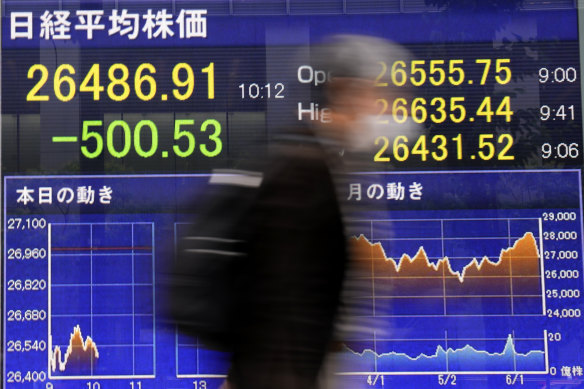Bank of Japan defies market, keeps yield control policy unchanged
By Leika Kihara and Toru Fujioka
The Bank of Japan on Wednesday maintained ultra-low interest rates, including its 0.5 per cent cap for the 10-year bond yield, defying market expectations it would phase out its massive stimulus programme in the wake of rising inflationary pressure.
At a two-day policy meeting, the BoJ kept intact its yield curve control (YCC) targets, set at -0.1 per cent for short-term interest rates and around 0 per cent for the 10-year yield, by a unanimous vote.

The central bank also made no change to its guidance that allows the 10-year bond yield to move 50 basis points either side of its 0 per cent target.
The decision follows the BoJ’s surprise move last month to double the yield band, a tweak that analysts say has failed to correct market distortions caused by its heavy bond buying.
Wednesday’s decision suggests that the BoJ isn’t seeking an immediate exit or a looser grip on bond yields. The central bank appears to be trying to reinforce its Governor Haruhiko Kuroda’s message that the December move was a technical change. The BoJ appeared to signal that easing will go on until sustainable inflation comes into sight.
In the run-up to the gathering, speculation heated up as 10-year yields repeatedly breached its new ceiling of 0.5 per cent. The market push forced the BoJ to buy a record amount of bonds at the end of last week.
The central bank bought a total of around 3 trillion yen ($33 billion) of government bonds over Monday and Tuesday, as the 10-year yield continued to rise above its 0.5 per cent ceiling. The BoJ spent almost 10 trillion yen defending its stimulus framework on the final two days of last week.
Markets had anticipated a possible change to policy at this week’s meeting. The decision to keep settings unchanged sent the US dollar surging nearly 2 per cent against the yen, its biggest one-day percentage jump since June 17.
Christopher Wong, currency strategist at OCBC in Singapore said the market’s focus now shifts to the next meeting in March, which will be the final one Kuroda chairs before his term ends in April.
Since December’s action, the BoJ has faced the biggest test to yield curve control policy since its introduction in 2016 as rising inflation and the prospects of higher wages gave traders an excuse to attack the central bank’s yield cap with aggressive bond selling.
With the memory of December’s shock move still vivid in the mind of global investors, bets on further BoJ shifts are unlikely to go away.
A number of economists have already brought forward their expected timing for a policy shift, according to this month’s Bloomberg survey. Some now predict a change in April, the first meeting scheduled under a new governorship, while others expect a pivot in June.
Speculation is likely to remain also because Japan’s inflation is running far above the BoJ’s 2 per cent target level.
Japan’s core consumer inflation has exceeded that target for eight straight months, as companies raised prices to pass on higher raw material costs to households.
Data due out on Friday is likely to show inflation hit a fresh 41-year high of 4 per cent in December, according to a Reuters poll, although analysts expect price growth to moderate later this year reflecting recent declines in global commodity prices.
Reuters, Bloomberg
The Business Briefing newsletter delivers major stories, exclusive coverage and expert opinion. Sign up to get it every weekday morning.
Most Viewed in Business
Source: Thanks smh.com